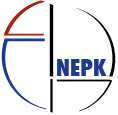

(unknown artist, possibly Hildo Krop, realisation before 1921, silver, struck, 25,5 mm, NEPK2539)
In this news flash we discuss a small Medal of Merit, which was awarded exactly one hundred years ago to an employee of engineering works Gebr. Stork & Co in Hengelo. The obverse shows a row of five powerful workers who simultaneously swing their sledge hammers to mould the metal in the desired shape. The reverse legend shows the name of the factory. The medal is intended for one particular person, see the engraving on its reverse: “1896 – 1921 J.H. GRUYTERS 21 DECEMBER”. The image and texts are worn; probably the medal was polished often. It could have been carried along in the receiver’s pocket or purse for years. Wear and traces of polishing are often seen on these small diameter medals commemorating 25 or 40 years of service to a company or organisation. The NEPK collection, being a collection of medals with an economic relation, features over 150 of medals of merit. They were typically intended for common employees, who were proud to have received it. Besides this medal with a specific design for a particular factory, company or organisation, generic medals for 25 or 40 years of service exist, provided by industry-wide umbrella organisations. An example is the commemoration medal that the Nederlandse Maatschappij van Nijverheid en Handel NMNH (Netherlands Association for Industry and Trade) made available to its members. Besides name and dates of the employee, member organisations almost always had their own name engraved. (For examples on www.NEPK.nl, use the key word “NMNH” in the pull-down menu “Group”).
Two questions remain for the medal shown: why was the recipient’s name erased? And is Hildo Krop indeed the medallist? If not, who could it be?
For the medal shown, click: https://nepk.nl/en/collectie/?id=2539
For earlier news items, click: https://nepk.nl/en/news/



















